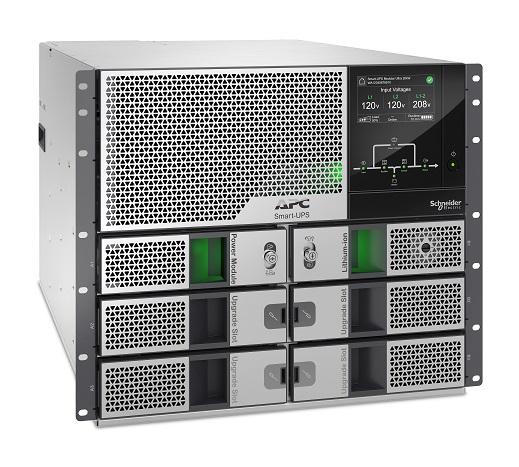How innovative modular UPSs support digital transformation at edge computing sites
In this era of digital transformation, as we witness the runaway growth of edge computing, the uninterruptible power supply (UPS) is doing its part to help organizations achieve scalability, redundancy, and resiliency goals.

In this era of digital transformation, as we witness the runaway growth of edge computing, the uninterruptible power supply (UPS) is doing its part to help organizations achieve scalability, redundancy, and resiliency goals.
With traditional UPSs, if you need to expand, you typically must purchase another unit that will sit next to the existing UPS or replace it with more capacity. Some organizations anticipate this by overprovisioning. They might deploy a 10kVA unit even though their current needs call for only 5kVA. In some cases, the added capacity never gets used.
However, businesses can get a lot more power that allows for the expansion of IT with a modular UPS, and this is particularly useful for edge computing sites. With modular UPSs, you can keep expanding in 5kVA increments up to 20kVA as the company grows. You save on upfront costs by purchasing only the capacity required until your needs increase. With new UPS solutions such as the APC Smart-UPS Modular Ultra, you also get more real power with modular units thanks to an increase in unity power factor. This means a 5kVA UPS gives you 5kW, so “apparent” power is the same as real power.
Expansion Options with UPS Modules
Modular UPSs have expansion bays that enable scalability. For example, let’s say you deploy a UPS with a single battery and a single power module, but your runtime needs increase over time. You can add both power and battery modules in 5kVA increments up to 20kVA.
Each power module requires at least one battery. For redundancy, you can add an extra battery or power module. If one fails, a reserve battery or power module takes over to avoid downtime. This is possible through N+1 redundancy, meaning you can add a reserve module as a backup. Additional batteries can also be added to increase the run time.

Schneider Electric
Traditionally, UPS expansion bays are dedicated to either batteries or power, but new technology and design is changing that dynamic. For example, APC Smart-UPS Modular Ultra units include universal bays that provide interchangeability. However, keeping in mind you can have more batteries than power modules, there is an option to add up to six battery expansion chassis for greater redundancy and runtime.
Also, to avoid shutting down equipment, these new units feature Live Swap, which makes it possible to replace power or battery modules with the system running. There’s no need to turn off the UPS itself or any of the connected equipment.
Smaller Footprint
One of the significant advantages of this new UPS is how much power it packs into a substantially smaller footprint. Measuring 9U, this innovative UPS takes up less than half the space of other models on the market, which measure up to 21U. Even Schneider Electric’s previous generation models took up 19U.
Those units delivered up to 12.8kW, which is considerably short of the 20kW to which the new modular UPS can expand. Even when you expand this unit to 20kW, you add only 3U, which means you’re still getting much more power in a smaller box.
As organizations move forward with digital transformation, applications become more power-intensive, and more equipment is added to the rack. You end up needing more power but with less space for it, so the APC Smart-UPS Modular Ultra solves that dilemma. This approach is advantageous at the edge where space often is constrained.

Schneider Electric
Maximize Uptime
As many organizations embrace digital transformation, they should have a plan to minimize unplanned downtime. These new UPSs help organizations meet digitization goals while addressing space constraints, whether at the edge or in a traditional data center. With their scalability, redundancy, and small footprint, they help maximize uptime and resiliency.
Intelligence Modules
Modular UPSs are equipped with a Main Intelligence Module or “MIM” – you can think of the intelligence module as the unit’s brain. It decides how to react in the case of a power anomaly, for example.
Traditional modular UPSs typically offer partial redundancy with a RIM or Redundant Intelligence Module, enabling a UPS to continue operating with limited functionality if the intelligence module has a problem. However, the new modular UPS from Schneider Electric has two MIMs. This feature adds another layer of redundancy, making it the only UPS solution in the marketplace to offer dual MIM functionality.
Power protection for digital transformation at the edge
The business landscape continues to evolve. Digital transformation at edge computing sites makes power protection a business imperative to prevent critical operations from being disrupted.
Learn more about how this innovative UPS technology can bolster power protection by exploring APC Smart-UPS Modular Ultra solutions.










